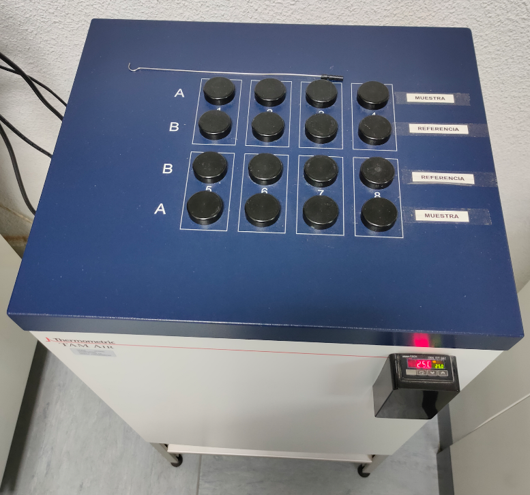Tests on fresh cements
In order to assess the fresh state properties of the new geopolymers with and without the ion-exchange resin, a series of tests are carried out to obtain the fluidity and setting time of the material and the kinetics of reaction.
IRINEMA carries out these tests in the facilities of the IETcc.
Sample preparation
Once the possible geopolymeric matrices have been designed, the samples of these materials are prepared for the evaluation of their fresh properties.
To achieve this step, activator solutions or water, proportions of raw materials, blast furnace slag, fly ash, or Portland cement as relevant, are prepared and mixed homogeneously, together with additives with plasticizer and water reduction functions provided by Sika. The loaded ion exchange resin incorporated is a 50% cationic-50% anionic mixture.
Minislump test
The slump, or minislump tests, are carried out in order to evaluate the fluidity of the different cementitious samples designed. These tests basically consist of the measurement of the drainage of the materials when released on a surface.
In order to achieve this assessment, the paste is introduced into a frustoconical geometry mold over a rigid, smooth and horizontal plate, and, after a minute of waiting, the mold is withdrawn in a vertical direction and with the lowest possible speed.
After removing the mold, measurements are taken with a digital caliper of, at least, two perpendicular diameters of the paste. We repeat these procedure at different times after the mixing of the paste to asses the loss of fluidity over time.




Setting time test
The setting time test consists of the periodic introduction of a standard needle into the cementitious material and, analyzing its specific resistance to penetration it is determined the start and end times of the setting stage.
The regulatory framework in which this test is developed is the harmonized Spanish standard of the European Union UNE-EN 193-3 “Cement test methods. Part 3: Determination of setting time and volume stability.” This standard defines both the test method and the critical resistance values from which it is considered that the setting period of a cementitious material begins and ends. In addition, the UNE- EN 196-3 standard sets the geometry and dimensions of the frustoconical mold into which the material is inserted, as well as the distance between the punctures and the dimensions of the penetration needle.

Isothermal calorimetry
Through Isothermal calorimetry tests, it is possible to record the heat released or absorbed during the hydration/activation reaction of the cementitious formulations while maintaining a constant device (calorimeter) temperature.
In this case, the tests have been carried out at 25 ºC during the first seven days of the reaction.